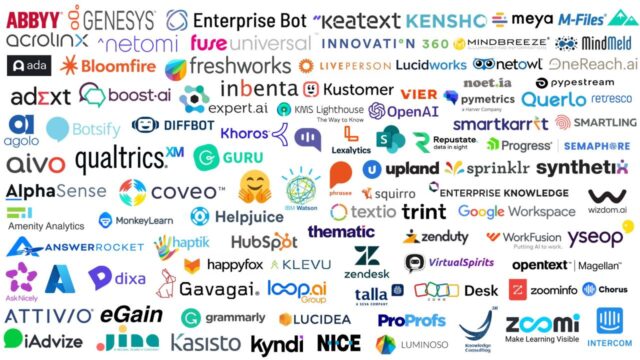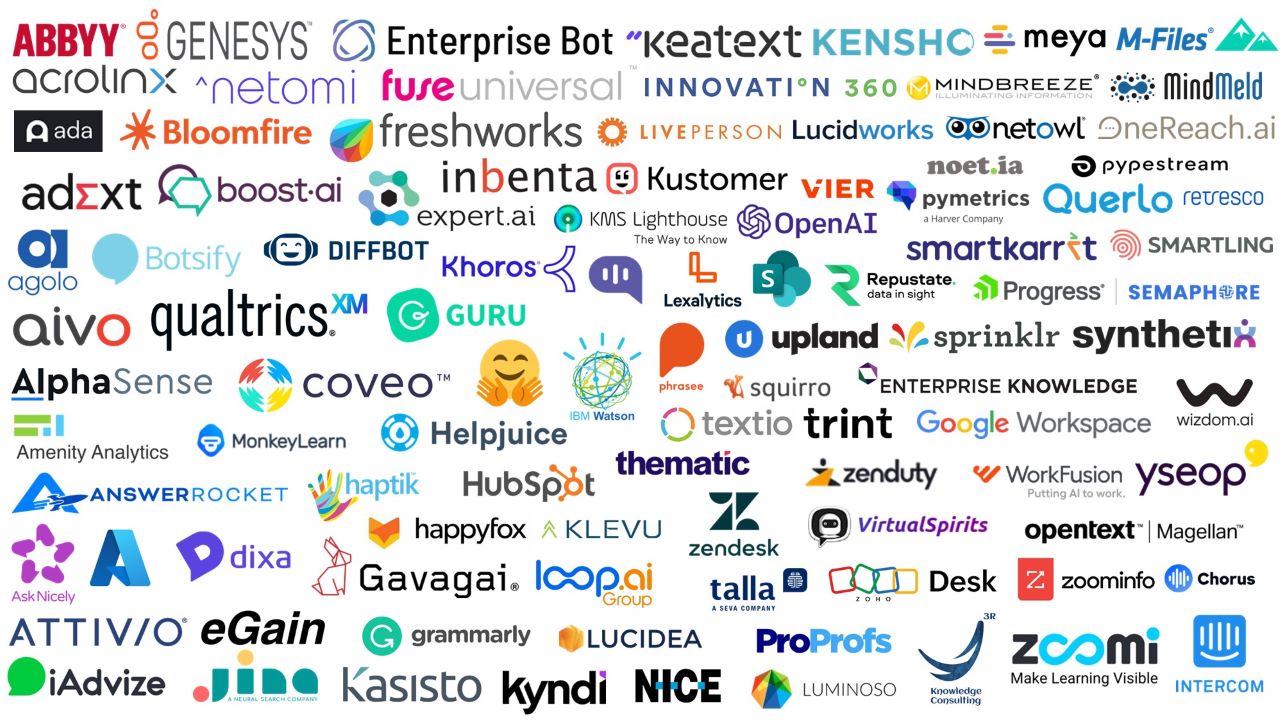
AI-based KM features for knowledge-centered services [Generative AI & KM series part 7]
This article is part 7 of the series AI integration strategy for learning and knowledge management solutions.
A comparative study of 100 generative AI tools in the context of learning and knowledge management (KM) was conducted and has resulted in a set of 35 KM processes where generative AI1 has augmented their experience, implementation, and execution. This article (part 7 in the series) focuses on knowledge-centered services KM processes.
Part 7. Knowledge-centered services
7.1. Customer conversations & ticket resolution
Unlike the traditional one-way ticket resolution process, with the help of generative AI, customers can engage in a conversational experience to resolve their tickets. The customer service experience can be augmented with natural conversation, personalized responses, and recommendations for query resolution. AI-powered recommendations can be integrated in the help desk console to provide agents with the best knowledge article suggestions based on keywords from the incident submitted. In addition, similar tickets suggestion provides a list of answers based on similar, already resolved requests. The help desk console would show who else in the support team is viewing and acting on a ticket in real-time to avoid agent collision and overlaps.
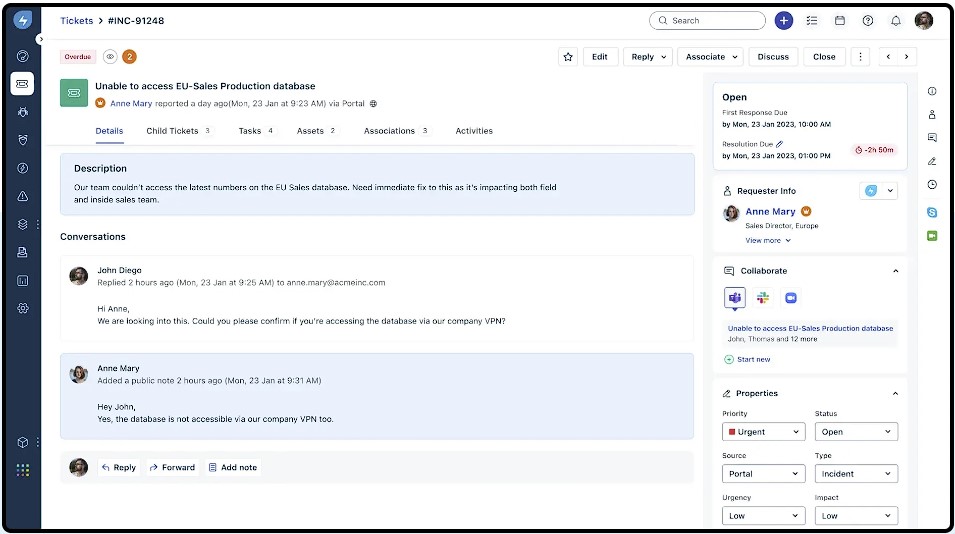
The help desk console should centralize the support channels in a single workstream that builds a single case queue with website, social media, discussion forums, live chat, and email contacts, allowing the customer service agent to track the complete customer journey. All incoming tickets are automatically sorted into categories like customer support, sales, marketing, and billing. AI would help to manage customer conversations from multiple channels like email, social, chat & phone calls in an omnichannel help desk.
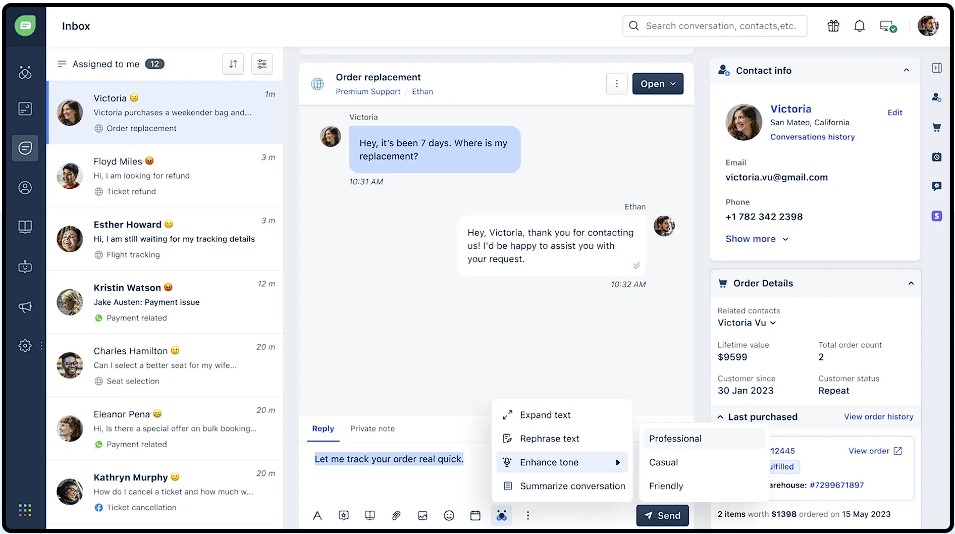
Cognitive AI technologies allow users to solve challenges related to efficiency (automatic routing of tickets to the right agents) and related to effectiveness (getting the right answer immediately). With the use of AI algorithms, powered by the cognitive capability to understand the unstructured data fields of new requests, every ticket can be resolved with less time and effort. For example, during call set up, the interactive voice response (IVR) data can be captured to pre-populate questions so that the agent can get a running start on the issue resolution process.
Cognitive AI technologies can give agents line of sight into an experts’ digital journey prior to the service call or ticket submission. Agents can see what content experts have engaged with and can personalize the response.
Some examples of standard customer service KPIs are:
- 15 minutes average resolution time
- 5 minutes average customer wait time.
7.2. Brand community & customer engagement
A brand community is a space where customers can engage directly with peers and experts at any time, for any topic, at a scale. Hosting these conversations help a brand attracts new customer segment and keeps existing ones returning for more news, updates, and releases on latest products/ services. Customers expect near instant answers and authentic engagement for an increasing variety of questions around their products/ services. With the help of AI algorithms, customers can get quick recommendations and relevant answers to their questions. AI algorithms can further engage customers with personalized updates according to behavior and intention. Whether the objective is to reach and convert high value prospects or offer proactive support to existing customers. AI can also propose insights on community engagement and measures the return on relationships for community events. For example, a community manager has organized two different events: meet & greet and lunch & learn. He/ she would like to know which one has the higher return on relationship to expand and grow on their brand community.
With the help of AI, customer experience (CX) leaders can increase the brand awareness and customer loyalty. For example, AI can augment the gamification experience in a brand community by proposing actionable insights for customers to advance in membership tiers. By doing so, customers can unlock new rewards, digital assets, exclusive merchandise, or a promotional code.
Customer experience leaders can predict and prevent customer churn. With the help of AI, CX can understand the experience of their customers by analyzing open-ended Net Promoter Score (NPS) feedback. They can discover and monitor customer sentiment by topic over time. Break down NPS comments by product-specific topics. Understand exactly what bugs or features customers mention most. Fix the bugs and add features to their product roadmap to win more Promoters. Product teams can focus on features that create loyalty by use data-driven analyses of unstructured NPS comments to master what Promoters love and lessen what passives and detractors find lacking.
With the help of AI algorithms and using thematic analysis, customer experience leaders can craft actionable insights from the most important patterns in the customer feedback. They can filter on metadata, and save customer segments, such as customer location or value, to dig deeper into issues or opportunities. For example, if the software team solves the ‘login issues’, it will improve the NPS by 16.6%.

7.3. Self-service portal and FAQs suggestions
With the help of generative AI, employees self-serve by smartly matching existing HR and IT articles to their questions through relevant search results, proactive recommendations, and smart chatbots. The AI chatbot suggests the top FAQs that provide a potential solution to the problem raised by the customer/ employee.
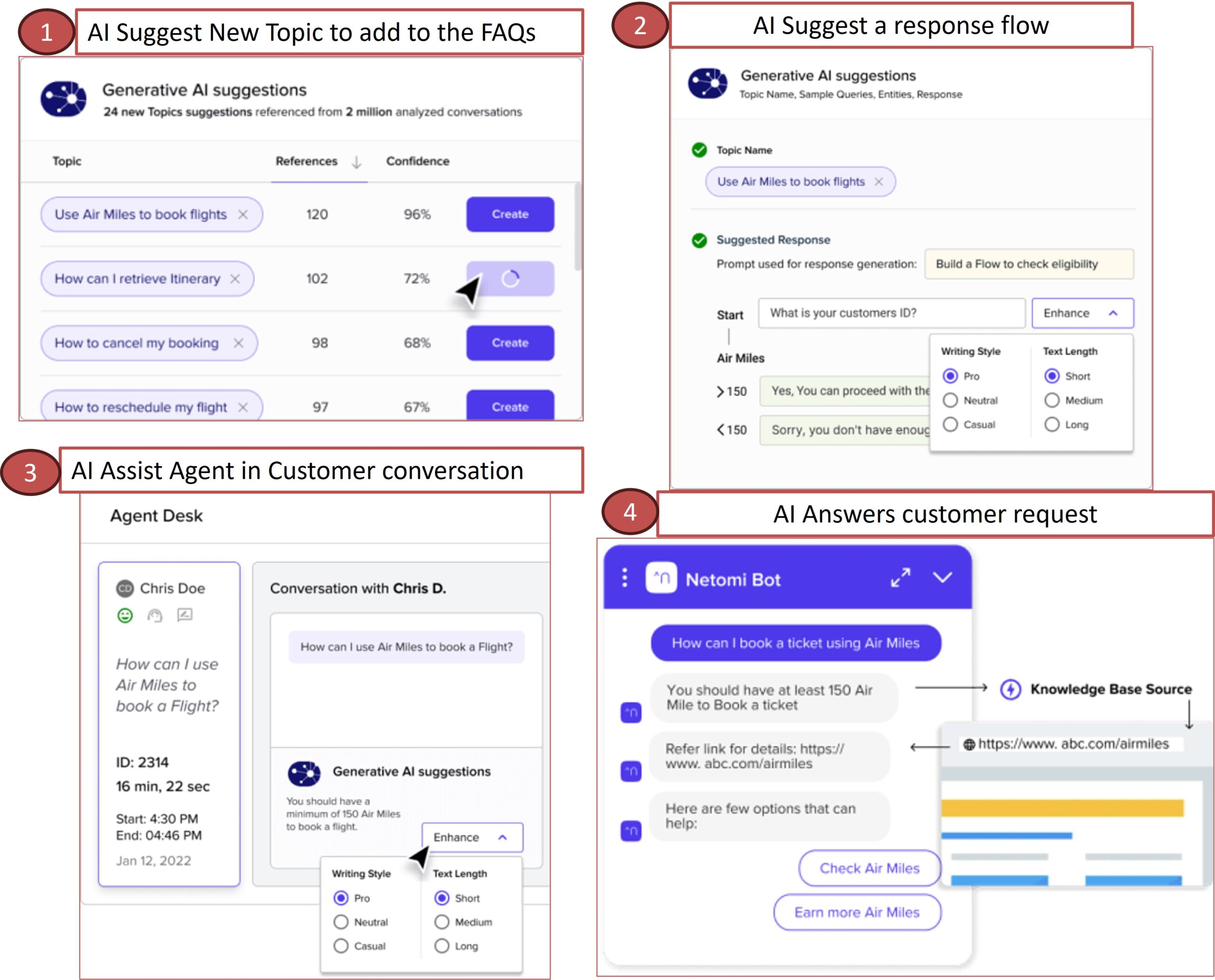
AI-based self-service portal can help customers to avoid waiting for hours or days to get a webform response. When they start to fill in a request web-form, they can receive personalized resolutions in a matter of seconds while keeping the submission process interactive and engaging. The AI will search for the most relevant and adequate answer based on the context and the customer subject line.
7.4. Automatic routing & real-time agent assistance
With the help of generative AI enhanced with machine learning, customer conversations can be automated and/ or augmented with human assistance. Tickets can be automatically routed based on real-time conversational analytics, customer preference and business context. The AI bot virtual assistant has access to the full context of the conversation and can escalate to human-assisted chat. For some cases, there’s ability to perform a step-down transition back to the virtual assistant. AI can act as both a full automation agent or a real-time agent assist to draft the response for the agents to confirm or edit.
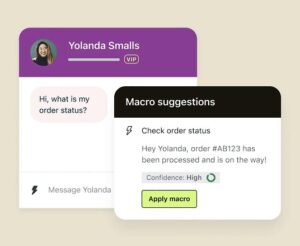
AI bot can connect via web app and integration with a long catalog of third-party platforms, enabling to move forward from informational conversations to transactional conversations – ability to perform actions and execute workflows to answer customer requests. With transaction conversational, the AI bot can help in automating transactions, facilitate multipart transactional inquiries, automate repetitive tasks, cut costs, free customer service agents to focus on complex requests and ultimately improve client satisfaction.
7.5. Customization and API integration with systems
With the help of generative AI, visual and interface customization can be semi-automated including themes, logo, favicon, layout. AI algorithms can also help with advanced customization by generating ready-to-use design elements and codes in Liquid HTML/ CSS or other programing languages.
API system integration is the ability to access and interact with a given knowledge system with 3rd party applications. API integration lowers the barrier to interact with the knowledge system by offering multiple user experience and interaction modes proposed by the 3rd party applications. For example, the ability to search wiki articles stored in a Knowledge Base from a messaging/chat system. By doing this, it will increase the adoption and the usability of the central knowledge base.
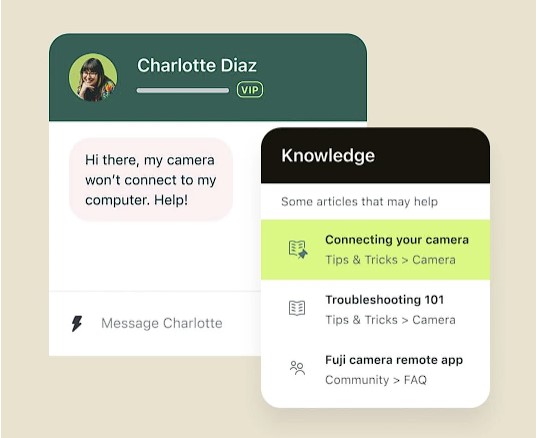
For some APIs, AI can automate the system integration with 3rd party applications. Below are some examples of applications offering APIs for system integration:
- Google Chrome (browser) add-ons
- Microsoft Teams (chat) integration
- Salesforce (ticketing) integration
- Slack (chat) integration
- Zendesk (ticketing) integration.
Examples of AI-based KM tools for knowledge-centered services: Thematic, Freshworks, Zendesk, Netomi.
Next part (part 8): AI-based KM features for knowledge analytics and intelligence.
Header image source: Author provided.
Reference:
- Najjar, R. (2023, July 13). Preliminary Understanding of Generative AI: What & How? Medium. ↩




